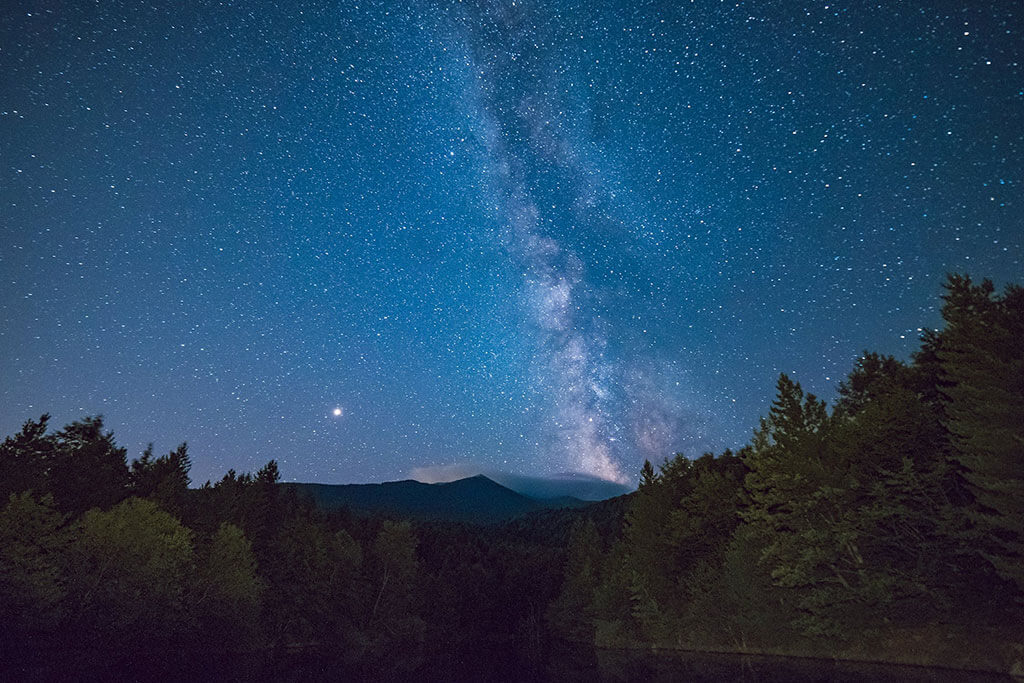
21
August
Total solar eclipse
As seen from the Earth, a solar eclipse is a type of eclipse that occurs when the Moon passes between the Sun and Earth, and the Moon fully or partially blocks ("occults") the Sun. This can happen only at new moon, when the Sun and the Moon are in conjunction as seen from Earth in an alignment referred to as syzygy. In a total eclipse, the disk of the Sun is fully obscured by the Moon. - Wikipedia

21
August
New Moon - 2:30pm EDT
The moon is between us and the sun. Without the moon in the sky at night, deep sky objects are easier to observe.

20
August
Hamilton Youth Poets: August Eclipse Slam!
Attention all Indigo children! On August 21st our earth will be experiencing a total solar eclipse. For those of you who don’t know what that is, a solar eclipse is when the moon passes between the sun and the earth, inevitably blocking the sun from the earth's view and completely encasing parts of our world in its dark shadows.

20
August
Dunlap Institute: Toronto Chinatown Festival
Join the Dunlap Institute on August 20th at the Toronto Chinatown Festival (多伦多华埠节) where the theme for 2017 is "Meeting Across the Milky Way." Drop in and see the Sun through solar telescopes, learn how to safely look at the August 21 solar eclipse, talk to astronomers and more!

19
August
Solar Observing (GO for Saturday)
Join us at the Ontario Science Centre for our monthly Solar Observing on the TELUSCAPE observing pad. This is the area in front of the Science Centre's entrance. We use specialized telescopes that are safe to aim at the Sun. Check our home page on the Friday prior for go/no-go calls as this event is weather dependent.

18
August
UofT Planetarium: A Grand Tour of the Cosmos
Showtimes: 7:00pm, 8:10pm, 9:15pm

12
August
Hamilton Amateur Astronomers: View the Perseid Meteor Shower
Watch the Perseids meteor shower with the Hamilton Amateur Astronomers at the Binbrook Conservation Area from 8 to 11pm on Saturday August 12. Admission is free so bring the whole family for a fun evening under the stars! There will also be a meteorite display, night sky tour and members will set-up their telescopes for observing celestial objects.
Bring a blanket or lounge chair as lying down is one of the best ways to enjoy the meteor shower.

12
August
Perseid Meteor Shower (SOLD OUT - WAITLIST ONLY)
Join us on a trip from downtown Toronto to dark skies to watch the Perseid Meteor Shower.

12
August
Vaughan Public Libraries: Solar Eclipse Information Session
The upcoming solar eclipse is fast approaching! For information on what it is and how to safely observe it, attend this information session hosted by RASC Toronto Centre member Chris Vaughan.

12
August
Solar Observing (NO-GO)
Join us at the Ontario Science Centre for our monthly Solar Observing on the TELUSCAPE observing pad. This is the area in front of the Science Centre's entrance. We use specialized telescopes that are safe to aim at the Sun. Check our home page on the Friday prior for go/no-go calls as this event is weather dependent.

12
August
Perseid meteors
The Perseids are a prolific meteor shower associated with the comet Swift–Tuttle. The Perseids are so called because the point from which they appear to come, called the radiant, lies in the constellation Perseus. The name derives in part from the word Perseides (Περσείδες), a term found in Greek mythology referring to the sons of Perseus. - Wikipedia

11
August
UofT Planetarium: A Grand Tour of the Cosmos
Showtimes: 7:00pm, 8:10pm, 9:15pm
